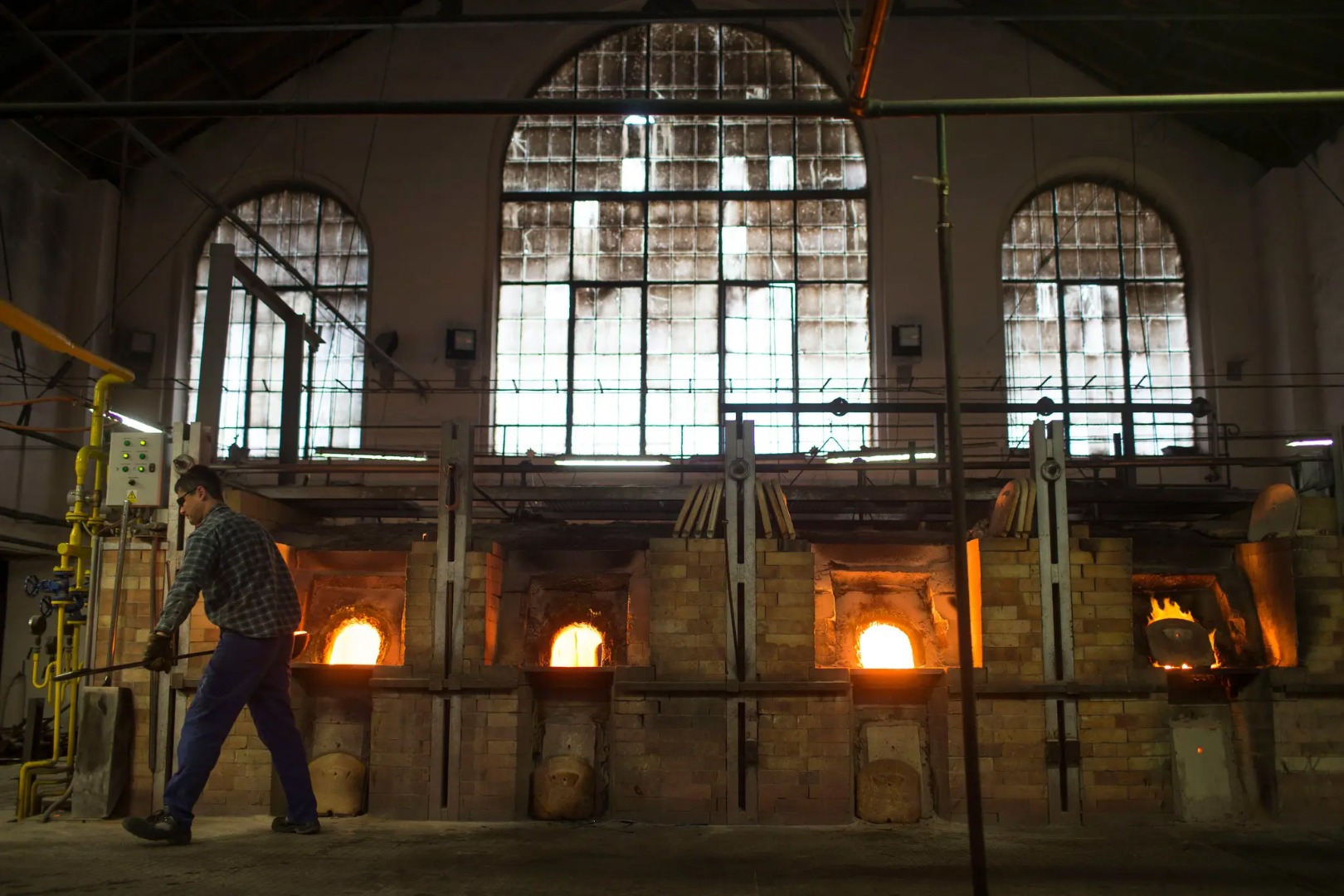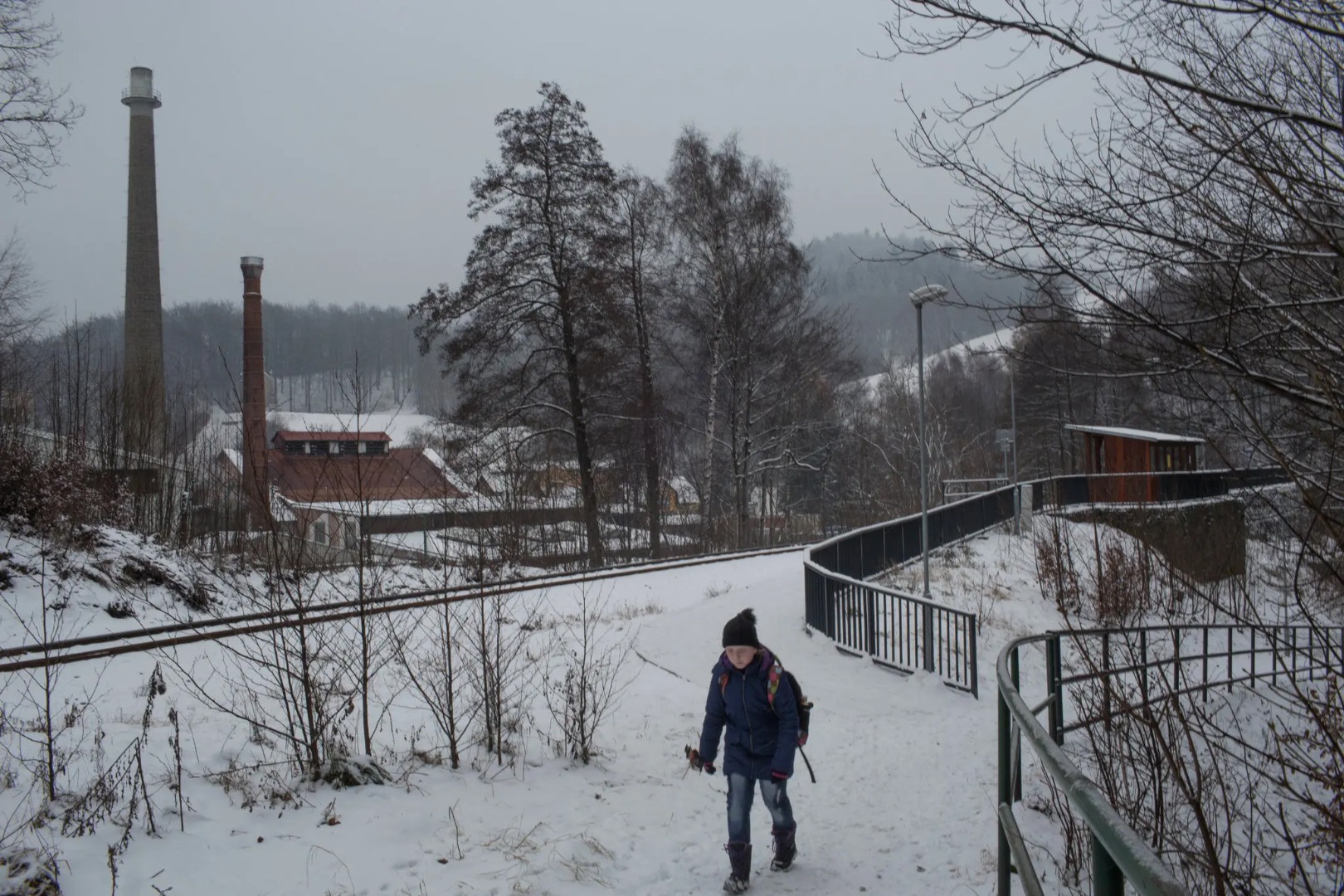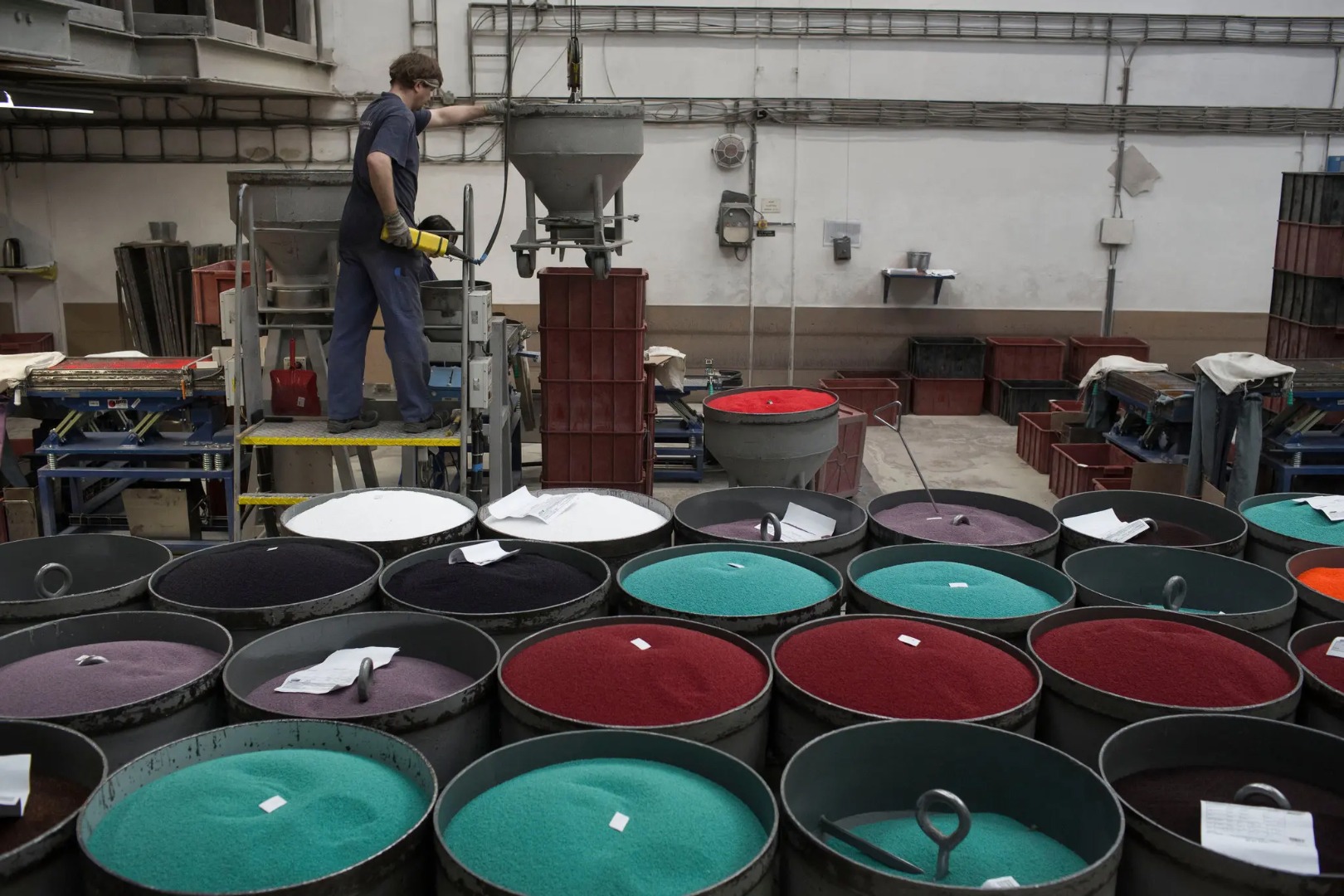Glass Beads Made in Czech Village Adorn Bodies of the World’s Tribes
“We are pleased that the popularity and knowledge of our seed beads has been publicised with the help of the best known and most prestigious international periodicals. As well as the National Geographic Magazine, the New York Times has also featured our seed beads from the PRECIOSA Traditional Czech Beads brand.“

A worker scooped molten glass out of a furnace at the Preciosa Ornela glass-bead factory in Desná
DESNÁ, Czech Republic — When the January issue of National Geographic landed in his mailbox last year, Petr Pus nearly fell to the floor. There on the cover and throughout the issue were members of the Kayapo tribe, living far up the Amazon in conditions more Stone Age than information age, all of them adorned with face paint and a glittering assortment of beads.
“I couldn’t believe it,” said Mr. Pus, the marketing director for Preciosa Ornela, which claims to be the world’s largest producer of high-end glass beads. “They were literally wearing our beads.”
Venture up the Amazon or into a Masai Mara village in Kenya, explore a jungle bazaar in southern India or even a roadside shop in Arizona selling Navajo knockoffs, and the chances are excellent that most of the beads you will see were produced in this unlikely mountain village a stone’s throw from the Polish frontier and a short drive to Germany.
For four and a half centuries, since Czech artisans brought back the secrets of glassmaking from the Venetian island of Murano, the narrow and tree-choked valleys of northern Bohemia have been producing a dizzying array of glass beads in all manner of colors, sizes, shapes and decorative flourishes.
And despite passing through history’s threshing machine with a series of conquering rulers, including kings, emperors, freedom fighters, Gestapo thugs and communist dictators, the artisans are still at it.
The Preciosa factory, which produces the beads using a mixture of traditional processes and modern industrial techniques, remains, with 900 workers, the chief employer in this small village of 3,000 people.
And while a flood of cheaper Chinese beads has poured out of Asia over the last five or six years, putting many of Bohemia’s traditional mom-and-pop beadmakers out of business, producers of the higher-end products — known as seed beads and made here by Preciosa and in Japan by a few operations — are experiencing one of their periodic bursts of prosperity.
“It’s a good job, with good pay and you get to say you are helping to make products that are the best in the world,” said Zdenek Gyalog, 29. He oversees the sorting department, whose workers, in many cases, have been at Preciosa for 15 or 20 years, and their parents before them.

The Preciosa factory, which produces beads using a mixture of traditional processes and modern industrial techniques, employs 900 workers
“If my son, someday, comes to me and says he wants to go into this business,” Mr. Gyalog said, “I certainly would not oppose it.”
Desna became a center of Bohemian bead production a little over 150 years ago when Josef Riedel, the descendant of generations of glass traders and manufacturers, built a factory astride a chattering river with the ragged Jizera Mountains looming on all sides. Some of his original buildings are now part of the Preciosa complex.
The Riedel family tomb dominates a steep hillside across the road from the factory, and the white mansion of the man once known as the glass king of the Jizera Mountains is down the road, now a museum.
For centuries, beads and glass vessels were made here in small workshops, or in literal cottage industries run by families, often as a second source of income.
The houses are still easily identifiable in the surrounding countryside, notable for their two chimneys, indicating that a glass furnace anchored one part of the property.
Today, nearly all of those mom-and-pop operations have fallen by the wayside, said Josef Nagy, 48, who runs a small beadmaking operation in the village of Pencin, not far from the Preciosa complex in Desna.
To make up for lost revenue, the beadmaker Fipobex opened a craft shop where people can experiment with making their own beaded jewelry, as well as a goat farm and a museum of agriculture. Credit Uriel Sinai for The New York Times
Since only Preciosa has the technology capable of making the higher-quality seed beads, smaller manufacturers — like Mr. Nagy’s company, Fipobex — target smaller and more specialized markets. But the Chinese competition does not make it easy.
“Everybody is struggling,” Mr. Nagy said.
A decade ago, he had 120 employees. Now there are only 15, and much of the equipment in his aging factory sits idle. To make up for the lost revenue, the company started giving tours, opened a goat farm, a museum of agriculture, and a craft shop where people can experiment with making their own beaded jewelry. “We could see the writing on the wall,” Mr. Nagy said.

To make up for lost revenue, the beadmaker Fipobex opened a craft shop where people can experiment with making their own beaded jewelry, as well as a goat farm and a museum of agriculture.
But as the smaller operations have struggled, Preciosa’s bead factory in Desna has only flourished, as has the town.
“As we say, beads are a cheap joy for poor people,” Mr. Pus said, leading the way late last year across a water-slick floor in an old, traditional furnace room.
Through eight gaping gates, workers scoop molten glass out of red-hot pots in the brick furnace. The glowing ingots sink with an angry hiss into wooden tubs of water large enough to swallow an easy chair.
The seed beads that are the basis of Preciosa’s current prosperity are more difficult to produce than ordinary glass beads — in which molten glass is pressed into a mold — but allow artisans a wider array of treatments, flourishes and colors.
Glass rods are melted in a furnace, then, while still pliable, pulled through a machine that shapes them into a strawlike tube.
The end result looks a bit like a cocktail straw, although there are 20 sizes, each creating its own size of bead, and 20 basic colors that can be mixed into an almost endless selection of tones and shades, some opaque, some transparent.
The holes in the straw can be round, triangular, star-shaped, even double-barreled, and a second color can be used to accent the hole or create baked-in glass patterns on the bead’s face.
The glass straws are sent through a slicing machine that bites off bead-size lengths, which are then reheated gently and put into a spinning machine that shapes the pliable glass into perfectly round beads that are then sorted and polished.

Pouring beads into a rounding machine last week. The Preciosa factory employs 900 people in a village of just 3,000.Credit...
“And at the end of all that, all you have is one measly glass bead,” Mr. Pus said.
Leos Adler, Preciosa’s bead production manager, set some sample boards on a conference room table.
“Our No. 1 market at the moment is India,” he said. Beads are used there in Hindu ceremonial garb, but also in everyday products like the mangalsutra necklaces worn to signal that a woman is married.
Preciosa sells directly to 70 countries and, through regional distributors, to 40 more. In Africa, the company sells to the Masai and Samburu tribes in Kenya and Tanzania, and to the Zulus, Xhosas, Ndebele and other tribes of southern Africa.
“You go to the Masai Mara and a lot of the beads you will see in the tourist markets are cheap Chinese products,” Mr. Adler said. “But the Masai themselves will only use our beads for their personal use.”
In North America, the largest market is for home hobbyists, but several Native American tribes also purchase the beads for higher-end pieces aimed at collectors and flush tourists.
Southern Sudan has also become a big market, Mr. Adler said. In South America, there are ceremonial garments for religious occasions, like childbirth ceremonies, as well as costumes for Carnival and an assortment of belts, napkin rings and jewelry for everyday use.
The biggest surprise of recent years was an explosion of interest in Czech beads in Ukraine and Russia, where they were suddenly being used to adorn religious icons and paintings.
“It has become a huge market,” Mr. Adler said. “And it just happened.”
One place the beads are not sold in large numbers is the Czech Republic. “I only have one thing made out of beads at home,” said Mr. Gyalog, the Preciosa supervisor. “It’s a bracelet.”
Katerina Hruskova, assistant chief curator at the Museum of Glass and Jewelry in the nearby city of Jablonec nad Nisou, where an exhibition of Czech beadwork since 1700 had recently opened, said that was understandable.“It is just a job for the people who live here,” she said. “If you are working eight hours or more every day with beads, you don’t really want to go home and see beads.”
This website uses cookies
PRECIOSA ORNELA, a.s. hereby informs you that its website uses cookies You can find more information about our cookies and how your data is processed in the privacy statement. We request your consent to use cookies specified below.